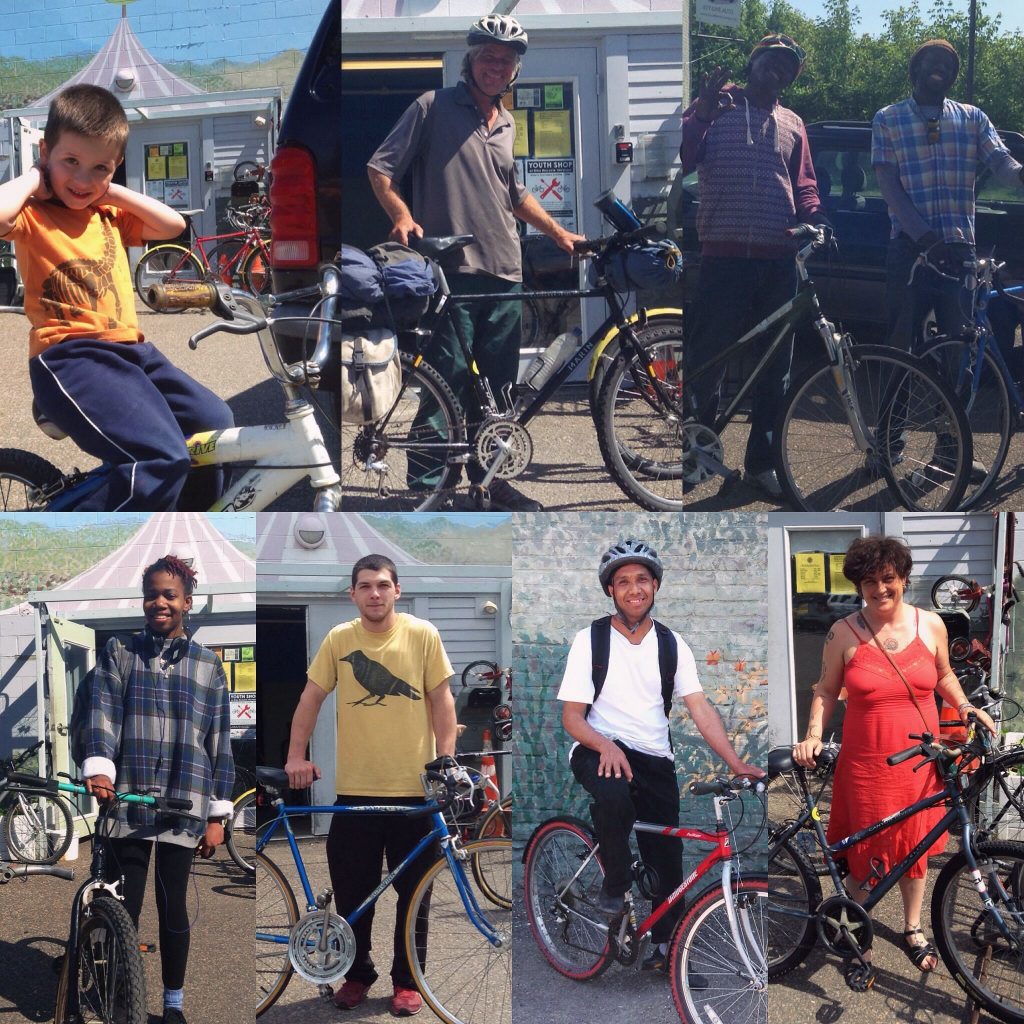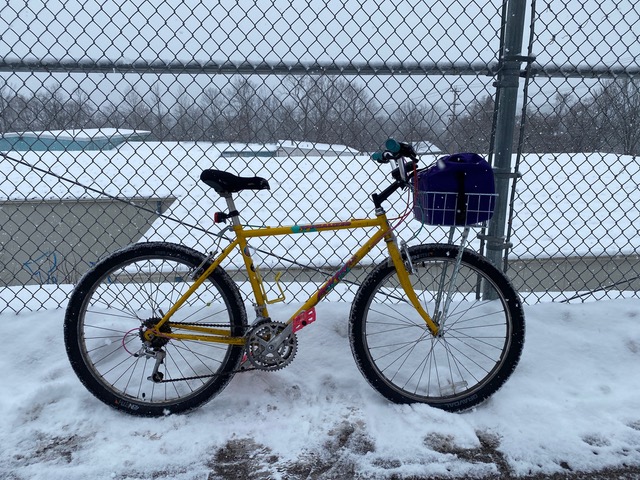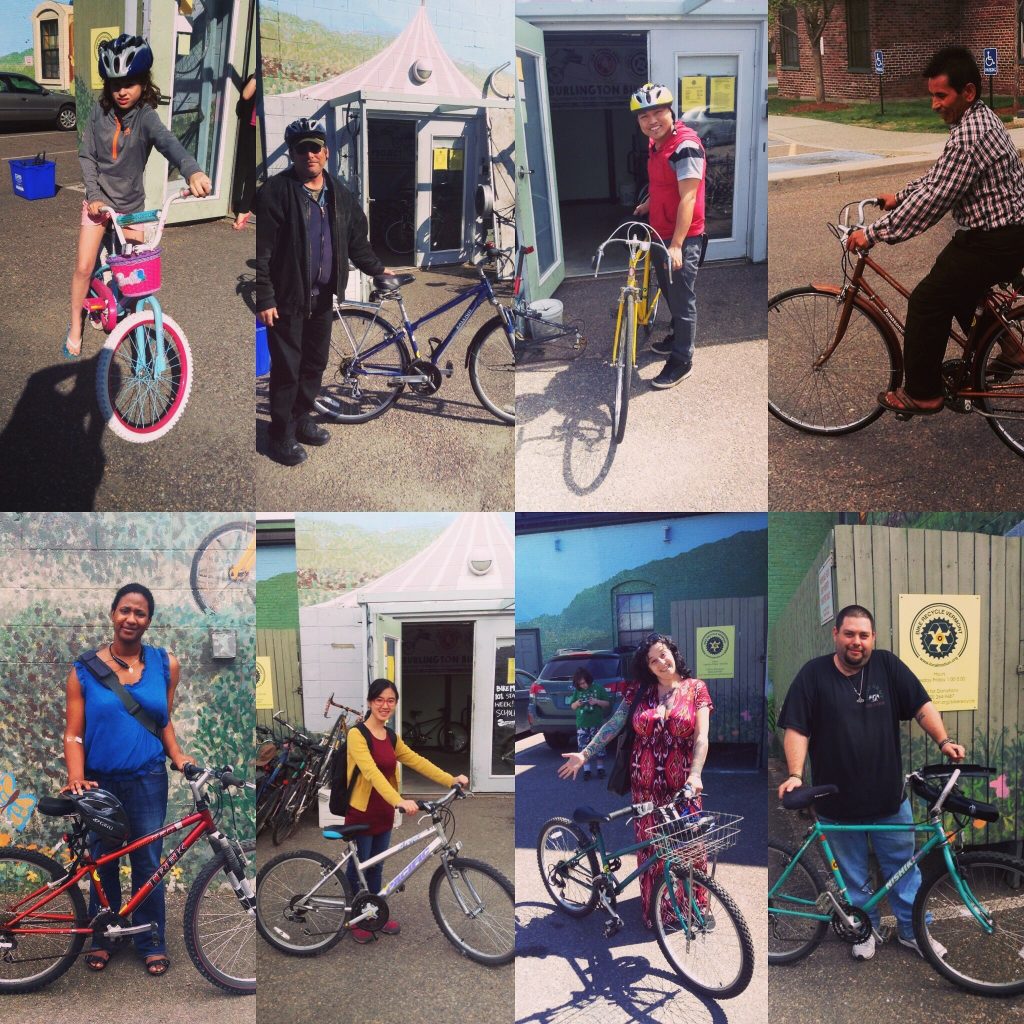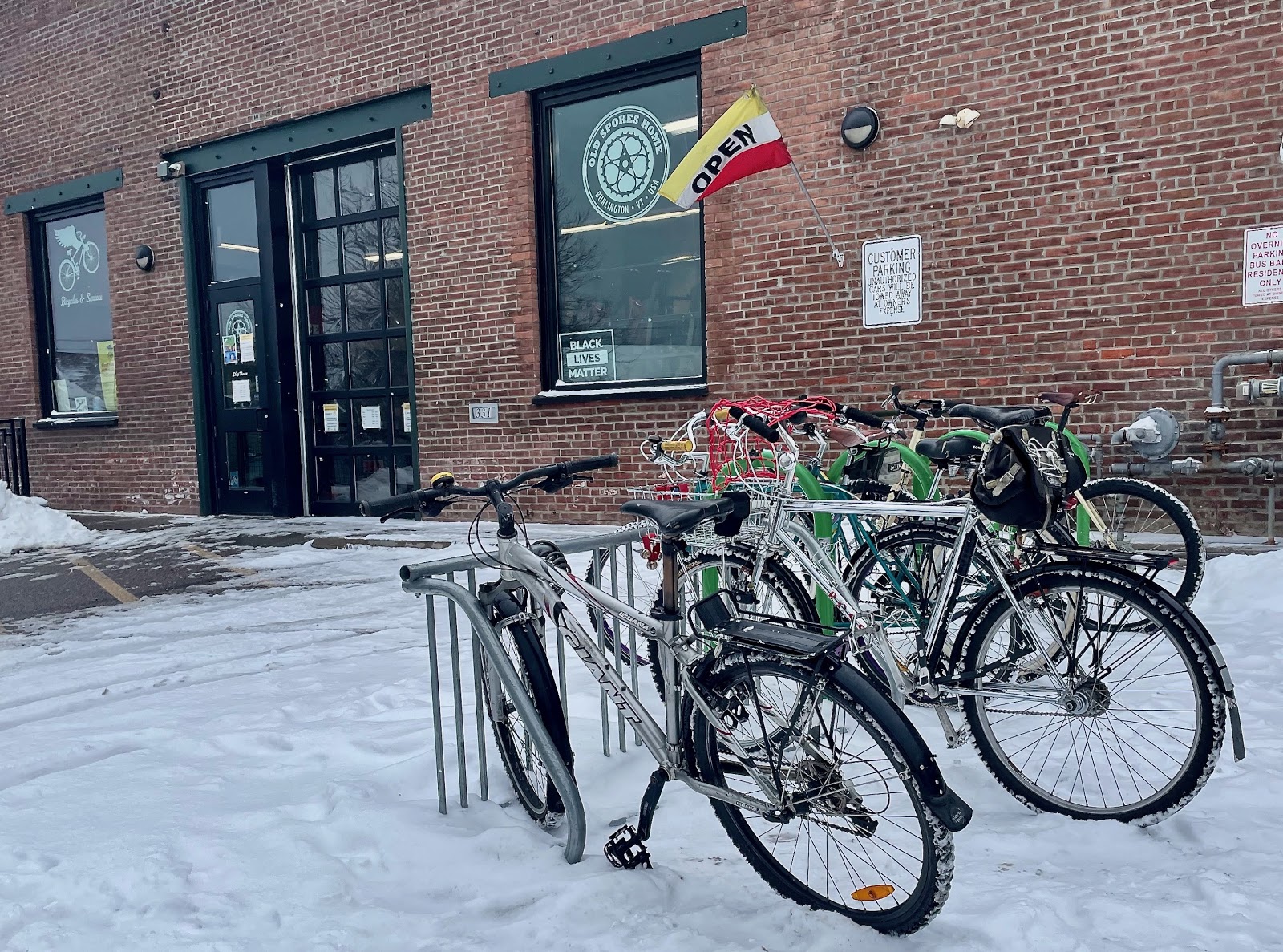By Kelly Duggan
Burlington’s snow-covered streetscape is a stark contrast to what we saw over the summer. Where pedestrians, cyclists, rollerbladers, joggers and the like once crowded North Winooski Avenue’s sidewalks and bike lanes in Burlington, there is now a line of dirty Subarus at any given rush hour. And understandably so: non-vehicular commuting can be cold, hard to plan for, and just plain dangerous in the winter months.
There are still, however, a number of cyclists who brave Burlington’s city streets out of necessity. Approximately 7% of households in the city do not own a car, and 30% own just one. Many of our Everybody Bikes customers frequent the shop to keep their bikes maintained and running through the winter, as they don’t have a viable alternative. Cars are expensive, walking is inefficient, and public transportation, an inconvenient option during the best of times, is also considered risky in the midst of a pandemic.

As a bike shop, Old Spokes Home subsidizes sales and services for more than 1,600 income-qualifying Vermonters, many of whom depend on their bikes as a means of transportation year-round. Local policy actors must consider this demographic, as well as the array of other non-bike owners who don’t have access to a car, when making decisions around street-level infrastructure. Clear sidewalks, bike lanes, and recreation paths are essential to pedestrian and bicycle safety in these months; street lighting, traffic laws, and adequate barriers between motorists and non-motorists are also important factors to consider.
Winter biking can be a blast, and there are plenty of ways to make it more comfortable despite the obvious challenges. Planning accordingly and having the right gear makes the experience just as much fun in the “off-season.” And whether you’re a “choice” rider looking for a more sustainable way to commute or just a cure for cabin fever, some pro tips can help keep you on a bike through even the Vermontiest of Vermont winters:
Gear. Gearing up to stay warm is a priority when biking in the winter, and it doesn’t have to be expensive. You could invest in a winter helmet, or wear a fleece ear covering or hat under a helmet you already own; a face scarf or balaclava; goggles; and waterproof gloves or mittens, in addition to a warm jacket. You’ll warm up fast when pedaling, so dress a little lighter for short commutes and use layers on a longer ride.
In terms of gear just for your bike, we recommend studded tires for navigating ice and snow safely. And don’t forget a front and tail light for when it gets dark early.

Maintenance. Regular maintenance is key for keeping your bike in shape for any season, but it’s especially vital in the winter. Store your steed away from precipitation, and stock up on wet lube for your chain, dry lube for cables and “pivot points” like on rim brakes, plus strong grease for your seat post and bolts so they don’t seize up in freezing temps. Give your bike a little extra TLC in the winter by lubing the chain at least once a week!
Technique. Ride with extra caution in the winter: always be alert, and take turns nice and slow. Plan extra time into your schedule to get to work or class so you don’t feel the need to rush. Stick to bike lanes and low-traffic streets when possible. And have fun! Check out our Winter Riding Workshop for more in-depth advice on gear and riding tips.

While cyclists can take precautions to stay safe (and have fun) on winter roads, street safety is a group effort. Drivers can help out by taking things slowly and giving cyclists plenty of room as they pass. Winter is a tough time to share the road. Local officials can work with road crews to ensure that designated bike lanes, sidewalks, and recreation paths are well-plowed throughout the snowy season.
Most importantly, look out for one another! Transportation alternatives like riding a bike or walking certainly aren’t the most convenient option this season, but they are the only option for our neighbors who can’t access a vehicle. We owe these travelers the experience of a safe commute.




